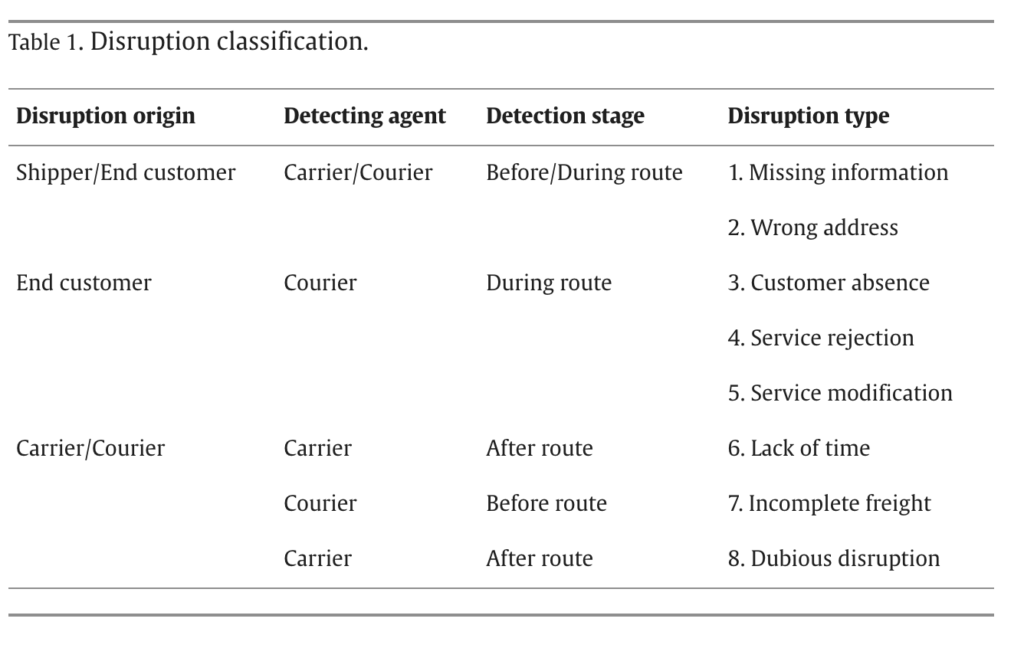The rapid growth of e-commerce in recent years has transformed how retailers and customers interact. This shift has significantly impacted freight distribution, as customers now expect their orders to be delivered directly to, or near, the point of consumption. Consequently, the volume of freight handled by logistics operators has surged, leading to an increase in the number of carrier companies and a rising demand for couriers, who sometimes struggle to meet their service commitments.
A new article presents a study on the current state of last-mile and first-mile reverse logistics in Spain, analyzing the operations of 20 carriers across 15 different provinces. The study proposes a framework for classifying service disruptions during last-mile deliveries and first-mile collections, identifying eight potential disruption types, such as missing information, wrong addresses, and customer absence. It also provides methods to help managers identify and categorize service failures.

The analysis underscores the critical role of service and courier traceability in managing disruptions and highlights considerable opportunities for improving carriers’ operational performance. Several managerial recommendations are offered to address these challenges and enhance overall efficiency.
The study proposes several measures and directions for improving service disruptions in reverse logistics operations:
- Improving service traceability: Carriers often hesitate to adopt new tracking technologies, but accurate service traceability is essential for handling disruptions and responding to customers. Many disruptions stem from courier errors or shippers providing incorrect information. Implementing GPS and mobile technology can help couriers report successful deliveries and disruptions efficiently.
- Employee training: Couriers need training in service traceability, notification protocols, and data standardization. Creating a supportive work environment can encourage accurate reporting and reduce the occurrence of false or dubious disruptions, which were found to be common in the study.
- Using service information as a customer selling point: Service traceability offers commercial advantages, such as notifying customers of potential failed deliveries in advance using machine learning and AI. This can differentiate companies from competitors by providing a higher service level.
- Accurate workload allocation: Couriers’ workload capacity varies, and assigning too many deliveries can lead to service disruptions. Machine learning can help optimize workload allocation by considering multiple variables. Managers should also avoid overburdening couriers, as it affects their well-being.
- Improved route planning: Optimizing routes based on couriers’ preferences and behaviors can reduce service disruptions. Incorporating couriers’ experience into route planning can enhance efficiency, especially in lowering disruptions caused by time constraints.
